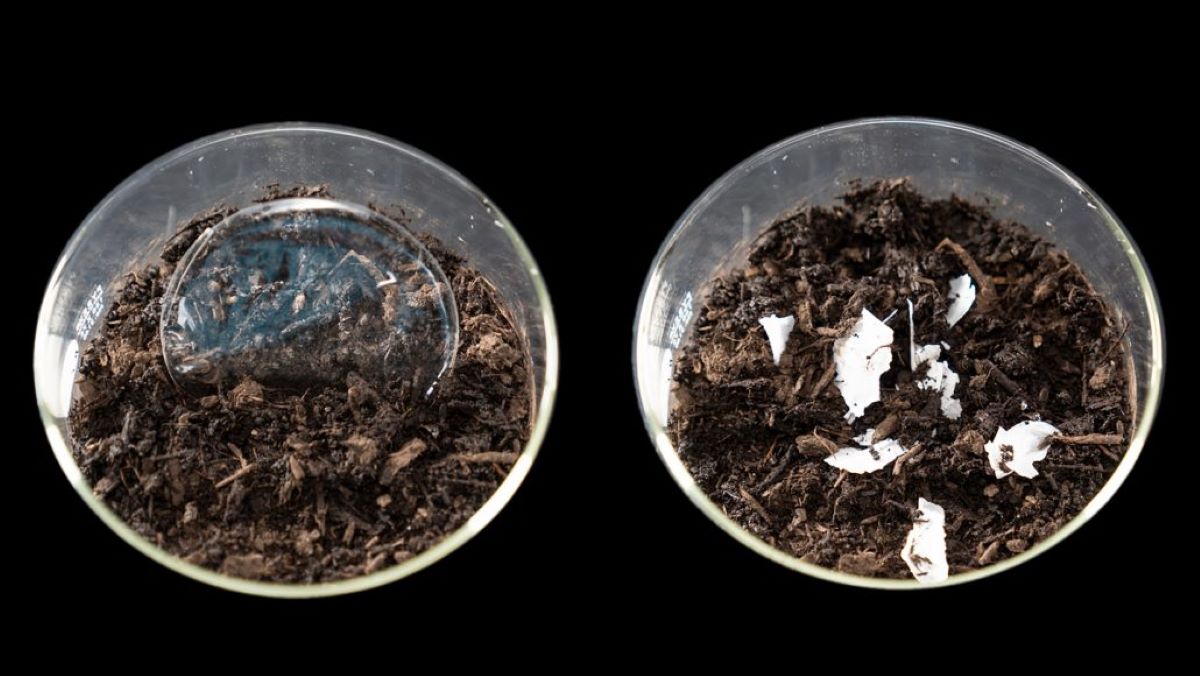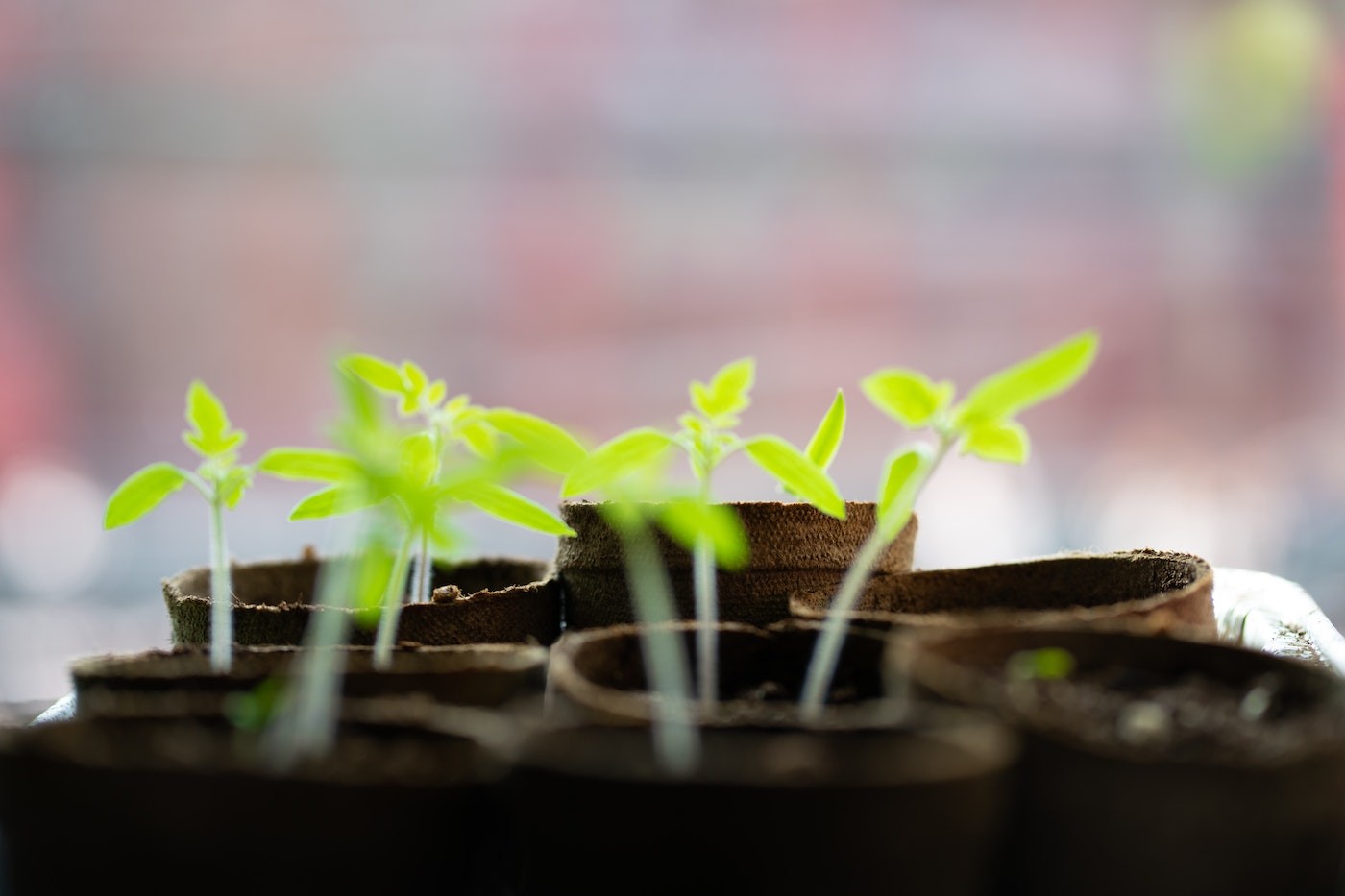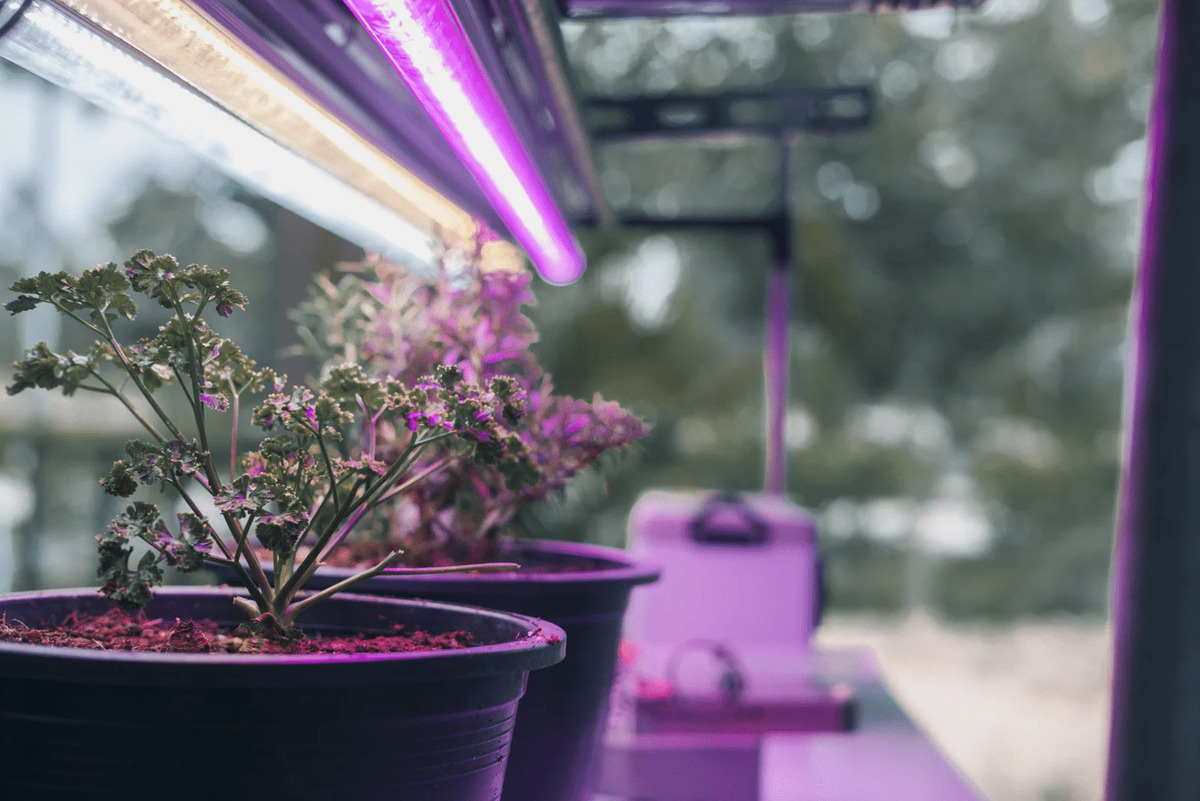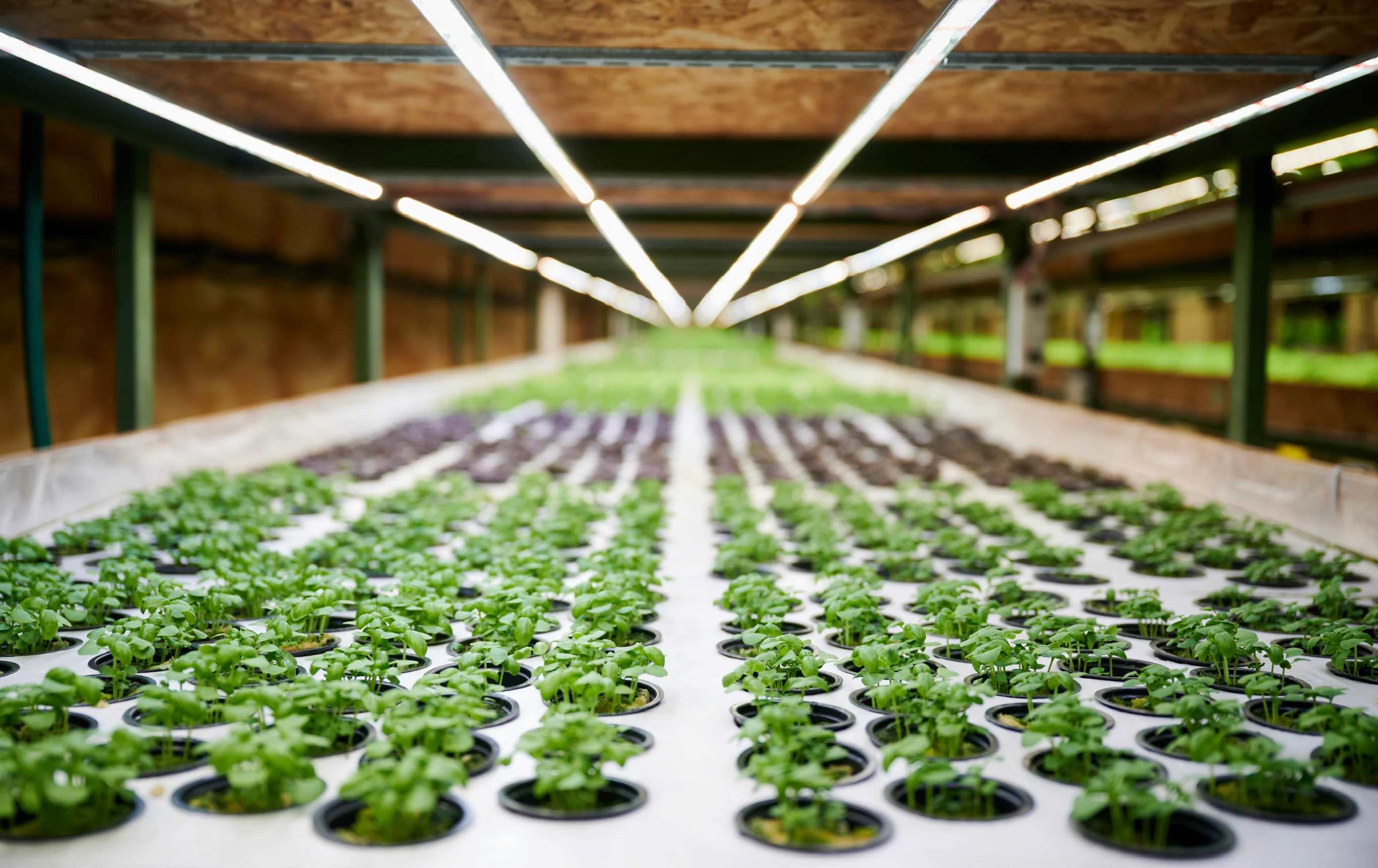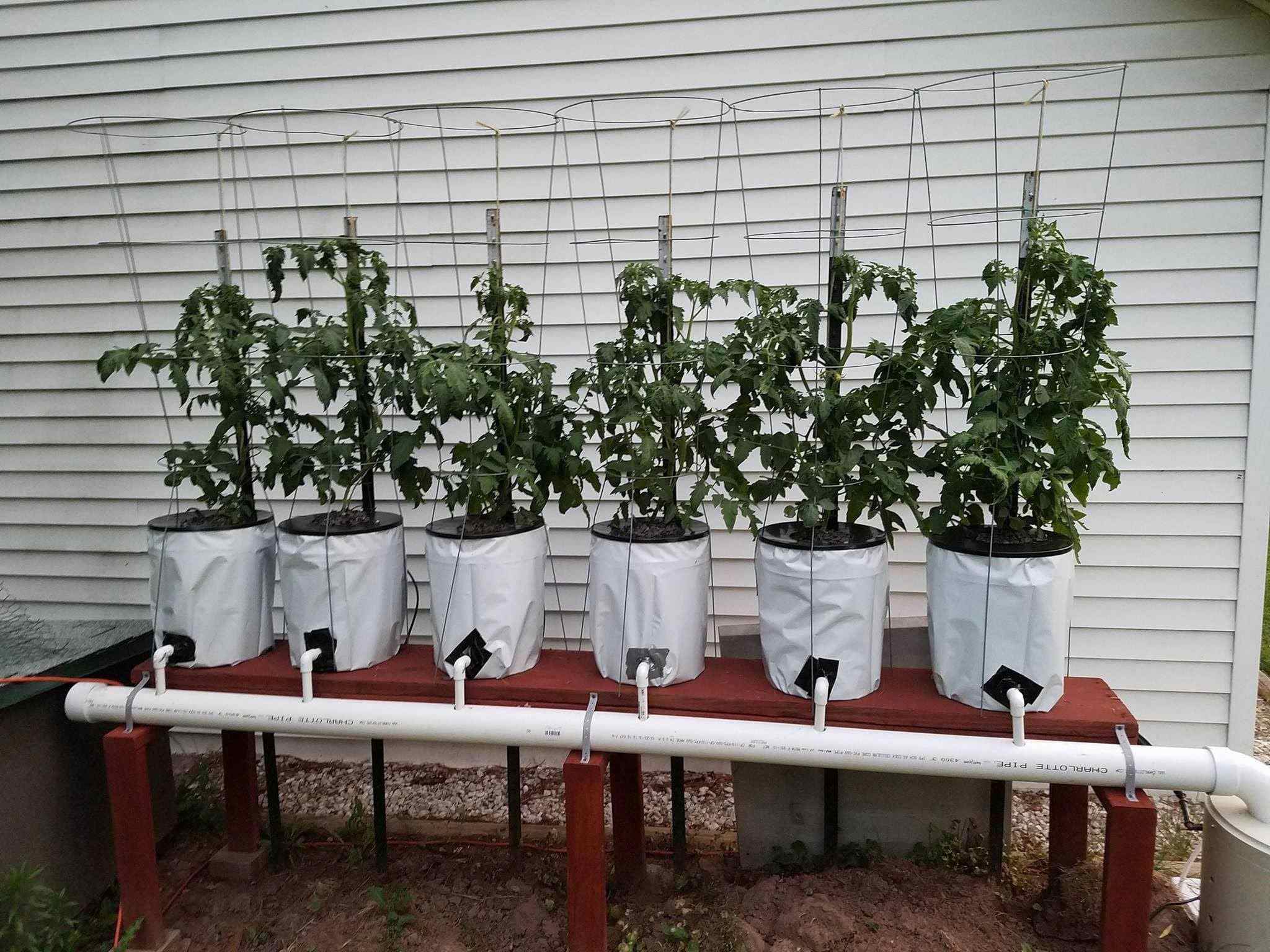Home>Gardening Tips and Tricks>How To Heat Up Compost
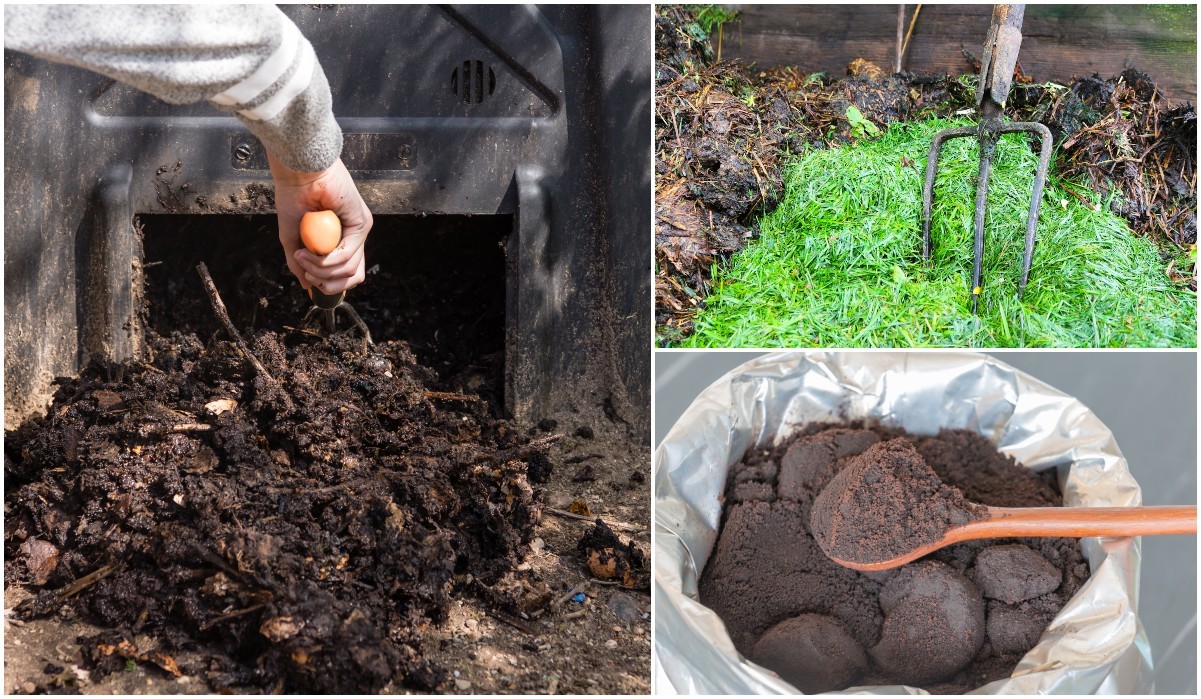

Gardening Tips and Tricks
How To Heat Up Compost
Modified: January 22, 2024
Learn effective problem solving techniques for heating up compost and accelerating the decomposition process with our comprehensive guide on how to heat up compost.
(Many of the links in this article redirect to a specific reviewed product. Your purchase of these products through affiliate links helps to generate commission for Chicagolandgardening.com, at no extra cost. Learn more)
Table of Contents
Introduction
Welcome to the fascinating world of composting! If you are a seasoned gardener or an eco-conscious individual, you likely already know the benefits of composting. Composting is the process of transforming organic waste into nutrient-rich material that can be used to enhance soil health and promote plant growth. It is not only an environmentally friendly way of managing organic waste but also a cost-effective and sustainable solution for your garden.
While composting itself is a natural process, there are ways to optimize the efficiency and effectiveness of your compost pile. One such way is by heating up your compost. Heating up compost has numerous advantages, including faster decomposition, increased nutrient availability, and the ability to kill weed seeds and pathogens. In this article, we will explore the importance of heating up compost and provide you with practical tips on how to achieve optimal temperatures in your compost pile.
Before we delve into the details, it’s essential to understand the factors that influence the heating process. The size of your compost pile, the carbon-to-nitrogen ratio of the materials used, and the moisture content all play a role in determining how effectively your compost will heat up. We’ll discuss these factors and more as we explore the art of heating up compost.
So, let’s roll up our sleeves and dig into the world of compost heating. Whether you’re a novice composter or an experienced enthusiast looking to refine your techniques, this article will provide you with the knowledge and guidance you need to take your composting game to the next level!
Why is Heating Up Compost Important?
Heating up compost is a crucial step in the composting process, offering a myriad of benefits that can greatly improve the quality and efficiency of your compost. Understanding why heating up compost is important will motivate you to take the necessary steps to optimize the heating process in your compost pile.
One of the main advantages of heating up compost is that it accelerates the decomposition process. When the temperature in your compost pile rises, the microorganisms responsible for breaking down the organic matter become more active. This increased activity leads to faster decomposition, resulting in rich and nutrient-dense compost in a shorter period of time.
In addition to speeding up decomposition, heating up compost also contributes to weed and pathogen control. The high temperatures reached during the heating process can kill weed seeds, preventing them from sprouting in your garden once the compost is applied. Moreover, the heat can also eliminate harmful pathogens, reducing the risk of spreading diseases to your plants.
Another key benefit of heating up compost is the increased nutrient availability. The elevated temperatures break down complex organic compounds into more accessible forms, making the nutrients more readily available to plants. This means that the final compost product will be rich in essential nutrients, promoting healthy plant growth and nourishing your garden.
Furthermore, heating up compost helps to neutralize odors. As the temperature rises, organic matter decomposes more rapidly and efficiently, minimizing the production of unpleasant odors. This is particularly important if you live in an urban area or have nearby neighbors.
Additionally, by heating up compost, you create an environment that is less hospitable to pests and insects. The high temperatures discourage pests from inhabiting your compost pile and minimize the risk of infestations in your garden.
Overall, heating up compost is an essential step in the composting process. It enhances the decomposition rate, kills weed seeds and pathogens, increases nutrient availability, eliminates odors, and reduces the likelihood of pest infestations. By harnessing the power of heat, you can optimize the quality of your compost and cultivate a thriving and healthy garden.
Factors that Affect Compost Heating
Several factors come into play when it comes to heating up compost. Understanding these factors is crucial in achieving optimal temperatures in your compost pile and ensuring efficient decomposition. Let’s explore the key factors that influence compost heating.
1. Size of the compost pile: The size of your compost pile plays a significant role in heat retention. In larger piles, the core of the pile retains heat more effectively, promoting higher temperatures. Aim for a compost pile that is at least three feet wide, three feet tall, and three feet long to ensure sufficient heat retention.
2. Carbon-to-nitrogen ratio: The ratio of carbon-rich materials (browns) to nitrogen-rich materials (greens) is crucial in determining the heating capacity of your compost pile. Aim for a ratio of approximately 25-30 parts carbon to 1 part nitrogen. Too much carbon can slow down the decomposition process, while too much nitrogen can lead to a smelly and soggy compost pile.
3. Moisture content: Proper moisture levels are essential for compost heating. The ideal moisture content for compost is around 50-60%. Too much moisture can result in a slimy and anaerobic environment, while too little moisture can hinder microbial activity and heat generation. Regularly check the moisture levels and add water if the compost feels dry or adjust with dry materials if it feels too wet.
4. Aeration and turning: Adequate aeration and turning of the compost pile are crucial for promoting heat generation. Oxygen is necessary for the aerobic bacteria responsible for decomposition, and regularly turning the pile ensures that oxygen reaches all parts of the pile. This helps to maintain a healthy microbial community, which in turn generates heat.
5. Insulation: The insulation around your compost pile can help retain heat. Consider using materials such as straw, cardboard, or old blankets to cover your compost pile during colder months. This will help to trap heat and maintain higher temperatures, especially in regions with colder climates.
6. Weather conditions: The ambient temperature and weather conditions can also affect the heating process. In colder climates, it may be more challenging to achieve high temperatures, while hot and dry climates can lead to faster evaporation, affecting moisture levels. Monitoring the weather conditions and making adjustments accordingly can help maintain optimal conditions for compost heating.
By considering these factors and making necessary adjustments, you can create an ideal environment for compost heating. Understanding the interplay between the compost size, carbon-to-nitrogen ratio, moisture content, aeration, insulation, and weather conditions will empower you to maximize the efficiency of your compost pile and ensure effective decomposition.
Choosing the Right Materials for Heating Up Compost
When it comes to heating up compost, selecting the right materials is key. Certain organic materials are known to generate more heat during the decomposition process, helping to raise the temperature in your compost pile. Here are some tips on choosing the right materials to optimize compost heating.
1. Nitrogen-rich materials: Nitrogen-rich materials, also known as “greens,” are essential for heating up compost. These include fresh grass clippings, vegetable and fruit scraps, coffee grounds, and garden trimmings. These materials are packed with nitrogen, which provides the necessary fuel for microbial activity and heat generation.
2. Carbon-rich materials: Carbon-rich materials, also known as “browns,” provide the necessary structure for the compost pile and help retain heat. Examples of carbon-rich materials include dry leaves, straw, shredded paper, sawdust, and wood chips. These materials balance the high nitrogen content, prevent the compost pile from becoming too wet, and promote airflow.
3. Manure: Animal manure, such as cow, horse, or chicken manure, is a valuable addition to a compost pile aiming for higher temperatures. Manure introduces additional nitrogen to the pile and contains beneficial bacteria that naturally generate heat during decomposition. However, ensure that the manure is well-aged or composted to avoid potential contamination.
4. Green manure crops: Growing green manure crops, such as legumes or clover, and incorporating them into the compost pile can boost nitrogen levels and heat production. These crops have the ability to fix nitrogen from the atmosphere and add organic matter, enhancing the overall nutrient content and decomposition process.
5. Chop or shred materials: To expedite the decomposition process and promote efficient heat generation, chop or shred larger organic materials before adding them to the compost pile. This increases the surface area available for microbial activity and ensures a more uniform distribution of materials throughout the pile.
6. Avoid certain materials: Some materials should be avoided to maintain a healthy and productive compost pile. These include meat, dairy products, oily or greasy items, diseased plant materials, and invasive weeds. These materials can attract pests, slow down the decomposition process, and create unpleasant odors.
Remember to maintain a balance between nitrogen-rich and carbon-rich materials in your compost pile. Aim for a ratio of 25-30 parts carbon to 1 part nitrogen to achieve optimal decomposition and heat generation.
By carefully selecting the right materials and maintaining the correct balance, you can ensure that your compost pile reaches the desired temperatures for efficient decomposition. Experiment with different combinations of materials to find what works best for your specific composting needs and environmental conditions.
Proper Turning and Aerating Techniques
Proper turning and aerating of your compost pile are essential for maintaining optimal conditions for heat generation and decomposition. Regularly incorporating air into the pile promotes the activity of aerobic bacteria and helps distribute heat evenly. Here are some techniques to ensure effective turning and aeration of your compost pile.
1. Use a pitchfork or compost aerator: A pitchfork or a specialized compost aerator can be used to turn the compost pile. Insert the tool into the pile and gently lift and turn the materials. This process helps break up clumps, allows oxygen to penetrate, and promotes aeration.
2. Turn the pile regularly: Turning the compost pile every 1-2 weeks is generally sufficient to maintain appropriate aeration. However, the frequency may vary depending on factors such as the size of the pile, the materials used, and the desired speed of decomposition. Monitor the moisture and temperature levels in your pile to determine the ideal turning frequency.
3. Check the moisture level: Proper moisture levels are crucial for the efficient decomposition of organic materials. If the compost pile feels too dry, add water in moderation to moisten the materials. Conversely, if the pile feels too wet and compacted, incorporate dry carbon-rich materials like shredded paper or dry leaves to improve aeration.
4. Mix materials thoroughly: When turning the pile, aim to mix the materials thoroughly. This ensures that fresh materials are exposed to the heat generated by the decomposition process and allows for even distribution of nutrients. Pay attention to the center and lower portions of the pile, as these areas tend to retain less heat and require more attention.
5. Consider layering technique: If your compost pile is large, consider using a layering technique. Alternate layers of nitrogen-rich and carbon-rich materials to create well-balanced and aerated compost. This layering method promotes a more uniform distribution of nutrients and facilitates better airflow throughout the pile.
6. Monitor temperature and adjust: Regularly monitor the temperature of your compost pile using a compost thermometer or simply by feeling the heat with your hand (with caution). Aim for temperatures between 110°F to 160°F (43°C to 71°C). If temperatures are too low, adjust the carbon-to-nitrogen ratio by adding more nitrogen-rich materials. If temperatures are too high, add more carbon-rich materials or adjust moisture levels to cool down the pile.
By implementing proper turning and aerating techniques, you create an environment that encourages the growth of beneficial microorganisms and promotes heat generation. This results in faster decomposition, efficient nutrient release, and overall healthier compost.
Monitoring the Temperature of Your Compost Pile
Monitoring the temperature of your compost pile is essential to ensure that it is heating up properly and to make any necessary adjustments. By keeping an eye on the temperature, you can fine-tune the conditions within the pile to promote efficient decomposition. Here’s how to effectively monitor the temperature of your compost pile.
1. Use a compost thermometer: One of the most accurate ways to monitor the temperature of your compost pile is by using a compost thermometer. Insert the thermometer into the pile, making sure to reach the center. Take several readings at different locations to get a comprehensive understanding of the temperature distribution.
2. Measure the internal temperature: Aim to measure the internal temperature of the compost pile, as this will give you a more accurate indication of the heating process. The temperature in the core of the pile should be higher than the ambient temperature. Ideal temperatures for effective decomposition range from 110°F to 160°F (43°C to 71°C).
3. Monitor consistently: Regularly check the temperature of your compost pile to track any fluctuations. It is recommended to monitor the temperature every few days, especially during the initial stages when the pile is actively heating up. Once the pile has stabilized, monitoring once a week or every other week should be sufficient.
4. Observe hand feel: In addition to using a compost thermometer, you can also gauge the temperature of your compost pile by feeling it with your hand (with caution). A properly heated compost pile will feel warm to the touch. However, be mindful of hot spots that may be too hot to handle, indicating a need for adjustment.
5. Note any temperature changes: Keep a record of the temperature readings over time to monitor any changes or trends. This will help you identify patterns and make adjustments as necessary. For example, if the temperature remains consistently low, you may need to add more nitrogen-rich materials or turn the pile more frequently.
6. Adjust the pile as needed: Based on the temperature readings, make adjustments to the compost pile. If the temperature is too low, consider adding more nitrogen-rich materials to boost microbial activity and heat generation. If the temperature is too high, incorporate more carbon-rich materials or adjust moisture levels to cool down the pile.
By diligently monitoring the temperature of your compost pile, you can ensure that it is heating up effectively for efficient decomposition. Regular measurements and adjustments will help you maintain optimal conditions, resulting in high-quality compost that is rich in nutrients and beneficial microorganisms.
Common Challenges and Troubleshooting Tips
While composting can be a rewarding and straightforward process, it is not without its challenges. Understanding and troubleshooting common issues that may arise during composting can help you overcome obstacles and achieve successful composting results. Here are some common challenges and practical tips to address them:
1. Foul odors: If your compost pile emits unpleasant odors, it is likely due to anaerobic conditions caused by excessive moisture and poor aeration. To combat this, turn the pile more frequently to increase oxygen flow and ensure proper moisture levels by adding dry carbon-rich materials. Avoid adding meat or dairy products to prevent foul smells.
2. Slow decomposition: If your compost pile is not decomposing as quickly as expected, it may be due to an imbalance in carbon and nitrogen ratios. Adjust the ratio by adding more nitrogen-rich materials, such as fresh plant trimmings or kitchen scraps. Shredding larger materials can also speed up the decomposition process. Ensure sufficient aeration by turning the pile regularly.
3. Highly compacted pile: A compost pile that is overly compacted can impede airflow and slow down decomposition. If the pile feels too dense, consider adding dry carbon-rich materials like leaves or shredded paper to loosen it up. Turning the pile and incorporating more coarse materials can also improve aeration.
4. Pest infestations: Unwanted pests can be attracted to your compost pile, especially if it contains food scraps. To deter pests, avoid adding meat, dairy, or oily products to your compost. Bury food scraps deeper within the pile to minimize accessibility. You can also use a cover or fencing to discourage animals from rummaging through the compost pile.
5. Excessive heat: If your compost pile is generating excessive heat, it may indicate an imbalance in the carbon-to-nitrogen ratio. Add more carbon-rich materials, like dry leaves or wood chips, to cool down the pile. Adjust moisture levels by sprinkling water if the pile appears too dry. Turning the pile more frequently can also help dissipate excess heat.
6. Insufficient heat: If your compost pile is not heating up adequately, it may be due to insufficient nitrogen-rich materials or lack of moisture. Ensure the proper carbon-to-nitrogen ratio by adding more nitrogen-rich materials. Moisture levels should be around 50-60%. Water the pile if it feels dry or incorporate more green materials if it appears too dry.
7. Weed seeds and plant diseases: If your compost pile is not reaching temperatures high enough to kill weed seeds or pathogens, consider using a hot composting method. This involves constructing a separate compost pile with specific dimensions and maintaining the right balance of materials. Ensure that the pile is achieving temperatures above 140°F (60°C) for an extended period to effectively kill weed seeds and pathogens.
By identifying and troubleshooting these common challenges, you can overcome obstacles in your composting journey and cultivate a healthy and productive compost pile. Remember to regularly observe and make necessary adjustments to maintain optimal conditions and promote efficient decomposition.
Conclusion
Composting is a rewarding and sustainable practice that allows us to transform organic waste into valuable nutrient-rich compost. By harnessing the power of heat, we can optimize the efficiency and effectiveness of the composting process. Heating up compost offers numerous benefits, including faster decomposition, increased nutrient availability, weed and pathogen control, odor reduction, and pest prevention.
Throughout this article, we have explored the importance of heating up compost and provided practical tips for achieving optimal temperatures in your compost pile. We have discussed the factors that influence compost heating, such as pile size, carbon-to-nitrogen ratio, moisture content, aeration, insulation, and weather conditions. By understanding and manipulating these factors, you can create the ideal environment for heat generation and decomposition.
We have also delved into the process of choosing the right materials for heating up compost, emphasizing the importance of nitrogen-rich and carbon-rich materials in the proper balance. By selecting the appropriate materials and incorporating them into your compost pile, you can ensure efficient decomposition and nutrient-rich compost.
In addition, we have explored the importance of proper turning and aerating techniques, as well as monitoring the temperature of your compost pile. Regularly turning and aerating the pile promotes oxygen flow and ensures even distribution of heat and nutrients. Monitoring the temperature allows you to make necessary adjustments to maintain optimal conditions for efficient decomposition.
Finally, we have covered common challenges that may arise during composting and provided troubleshooting tips. From foul odors to slow decomposition and pest infestations, addressing these challenges will help you overcome obstacles and achieve successful composting results.
Composting is a continuous learning process, and each compost pile is unique. By experimenting, observing, and adapting your techniques, you will become adept at heating up compost and producing high-quality compost for your garden.
Now, armed with the knowledge and insights shared in this article, you can confidently embark on your composting journey. Embrace the art of compost heating, and watch as your organic waste is transformed into a nutrient-rich resource that nourishes your plants and contributes to a greener and more sustainable world.

